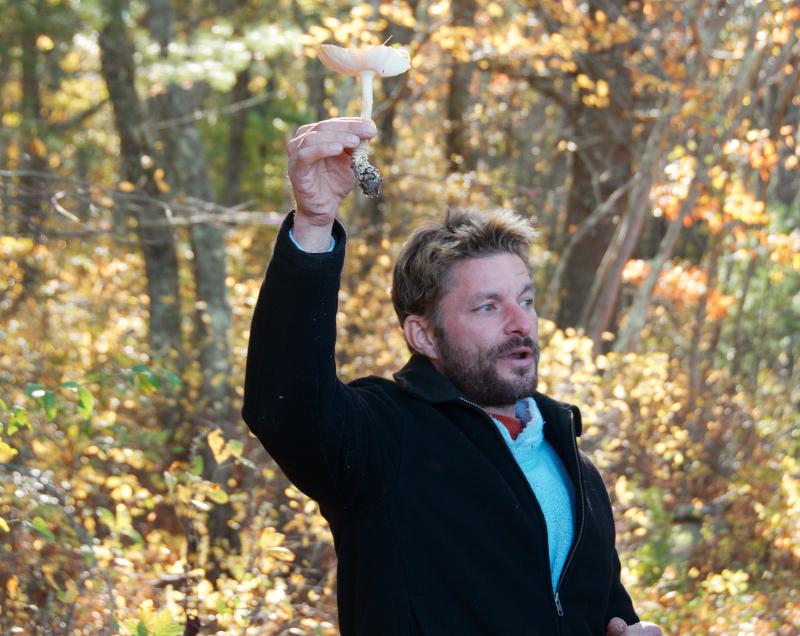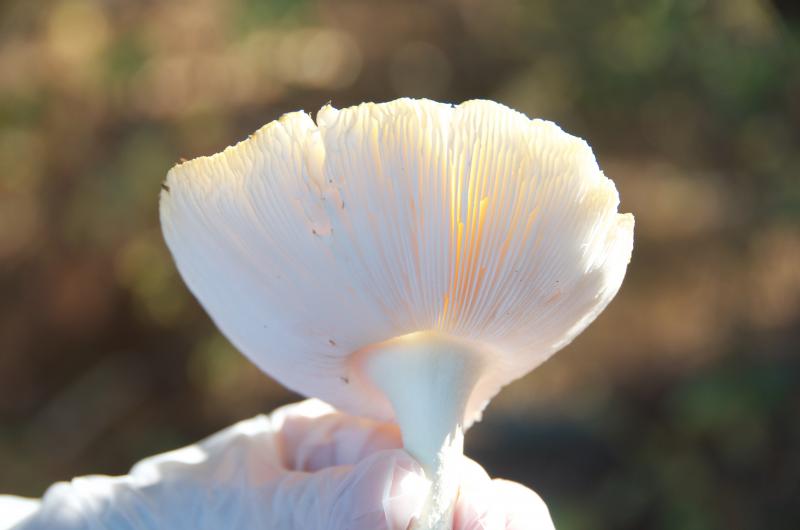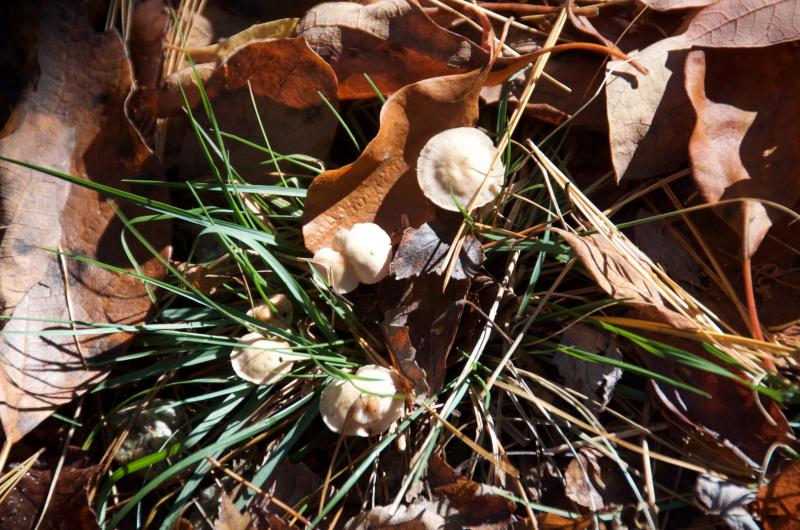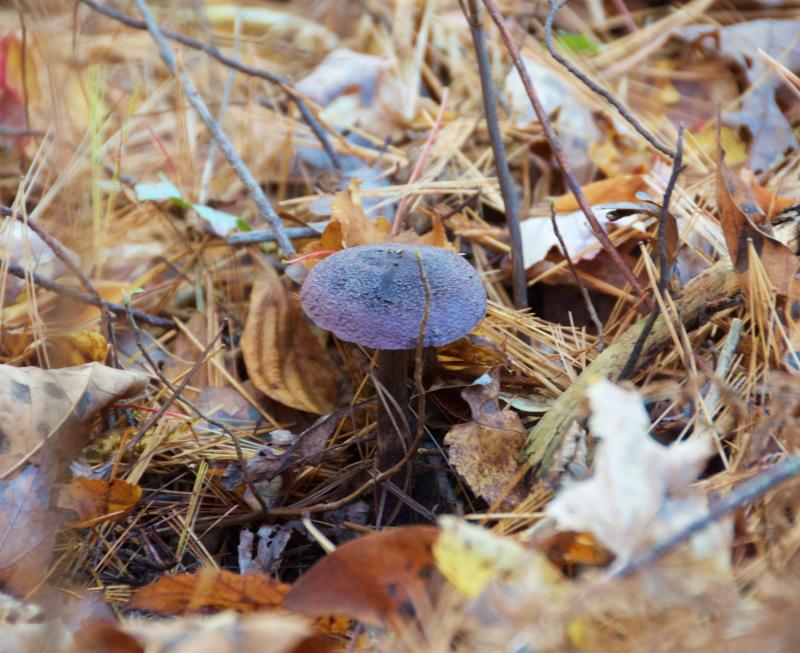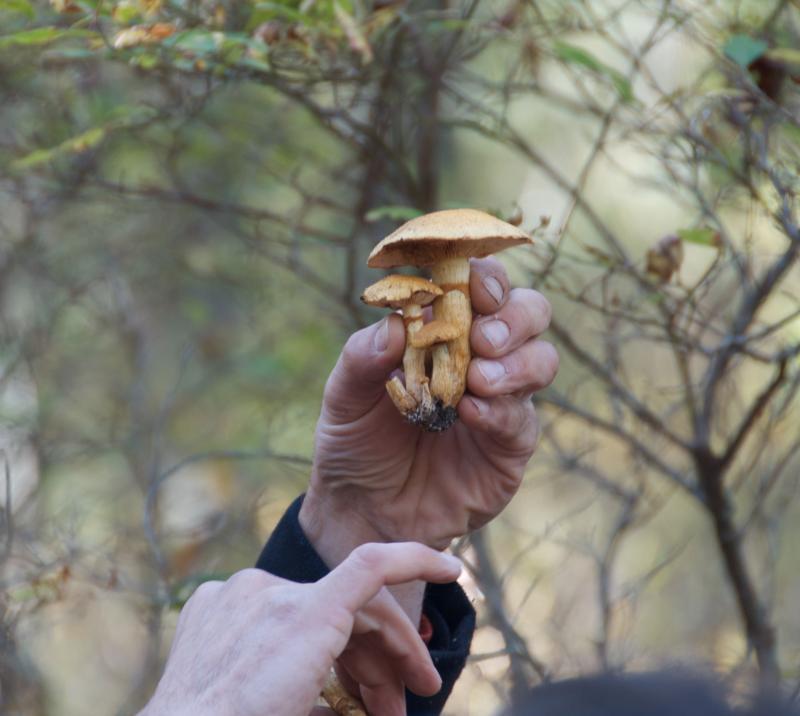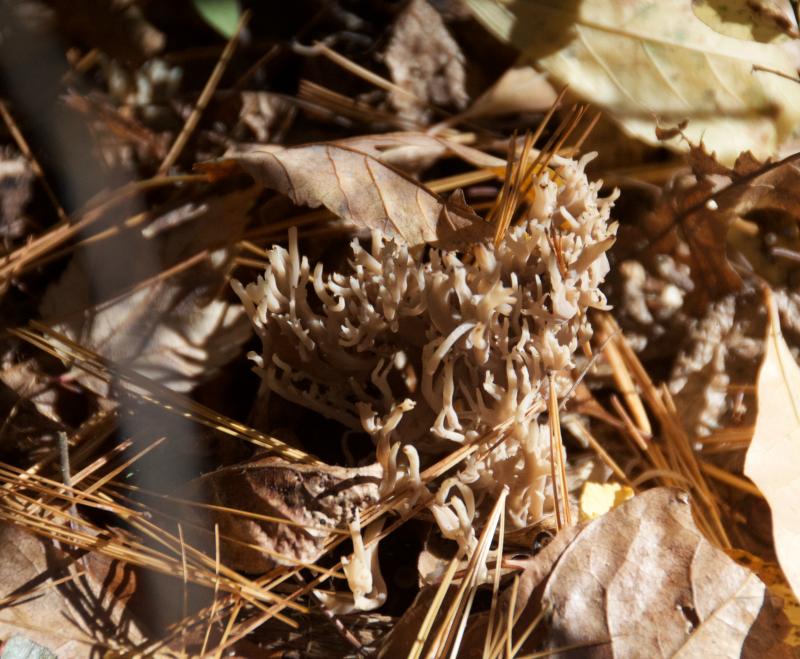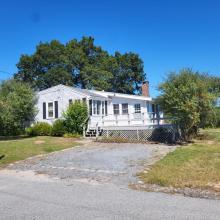Mushroom hunting in Marion
Deep in the Sippican Lands Trust's White Eagle property, mostly hidden by fallen leaves and pine needles, grow toadstools in an unexpected majestic purple hue.
“This is the third time I've ever seen these,” Welsey Price said of the rare Cortinarius violaceus mushrooms.
In the fall, after the rain, the woods contain no shortage of mushrooms – an upcropping of minuscule white Marasmius, round puffballs that spurt spores, striated, leathery turkey tails known for their medicinal qualities.
The slower you walk, the more you see, said Price.
On Sunday afternoon, Price, the founder of the Cape Cod Mycological Society, lead a mushroom hunt through the Sippican Lands Trust's White Eagle property, identifying fungi and discussing their importance.
A biologist by schooling and a carpenter by trade, Price said, “I started studying micology as a way to understand the natural world.”
Fungi are integral to every living creature – they directly affect the life cycle of the forest, contributing to plant and soil health, supplying thirsty trees with moisture and filtering toxins from the rain.
“Fungi help every plant live,” Price explained.
Mushroom species are thought to help fight cancer and boost immune systems.
Yet, less than 15 percent of the estimated 1.5 million fungi in the world have been identified, so there's still a mountain of mushroom research to do.
The fungi growing in Marion's woods contain an interesting sliver of the mushroom population, evidenced by the first specimen Price identified – lichen.
An indicator of air quality, it can filter harmful contaminates and also has the power to slowly decimate the most solid substances.
“It can break down rock, turn rock into soil,” said Price.
Moving along the path, Price, who once owned his own mushroom farm, pointed out several edible mushrooms – some tasty, others less so.
The bitter bolete can be eaten, but it's not terribly palatable.
Nibbling a piece of the meaty fungi, Victor Vieira, a chef based in Mattapoisett, said, “It's like a really bad blue cheese.”
Others, such as the puffball, can be eaten when fresh, but become inedible once they age.
For Price, mushrooms hold an endless fascination, and he encouraged the group to appreciate their contribution to the ecosystem. Plus, it's always good to stop and smell the fungi.
“All mushrooms have a signature - you can identify them by their scent,” he said. “This usually has a sweet scent. I love the smell of rotting wood.”



